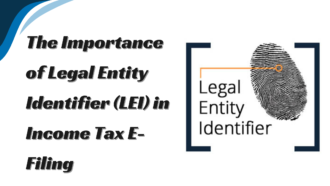What are the 4 Stages of Money Laundering: An Inclusive Guide for Businesses
Anti-money laundering (AML) regulations are designed to reduce financial terrorism. Companies acknowledge criminal activities to understand the stages of money laundering. AML is essential in securing companies from payment losses and data breaches. It makes firms economically weak and victims of heavy fines and information losses.
The government of every state has formulated AML regulations to facilitate financial sectors and other institutions with a secure business landscape. AML compliance process helps identify a structured approach for businesses to combat illicit criminal activities. It includes transaction monitoring and due diligence compliance to provide fraud prevention measures.
Anti-Money Laundering Compliance for Financial Organizations
Companies adhere to AML compliance to establish a criminal prevention framework for real-time user identification. Robust anti-money laundering practices safeguard financial sectors from financial terrorism. Imposters obtain heavy amounts from illicit resources and try to launder them through investments and property buying.
Hence, organizations are required to be highly active in detecting fraudster techniques. Companies risk heavy penalties for violating legal regulations by ignoring money laundering activities. Many individuals pose as authentic companies and try to partner with various firms.
What are the Four Stages of Money Laundering?
The anti-money laundering compliance process assists in transaction monitoring. Automatic systems indicate potential threats and revolutionize organizations with fraud prevention measures. It helps track user transactional activity and protects firms from money laundering penalties. AML procedures review user data, essential in maintaining organization security and enhanced working. Criminals use the following stages of money laundering, which are detected in the AML compliance process.
Illegal Money
Individuals obtain money illegally from various illicit sources, such as smuggling, corruption, tax leeches, and fraud. They use this money to launder it so that it can be unidentified by legal authorities.
Placement
Criminals begin their money laundering process with the placement stage. It is when they place their dirty money in the name of investments and savings in bank accounts and other companies. They transfer their funds to legal institutions to protect them from detection.
It may involve smurfing, a method in which imposters deposit money in small payments or chunks. Hence, it is the primary stage. The AML compliance process helps to control money laundering here with sharp AI detectors. Placement in money laundering is a stage where criminals initiate their process and facilitate the execution of their illicit plans.
Layering
Layering is the third step; here, imposters attempt to add a security layer to their funds. If they are successful in this stage, they remain unidentified in the manual AML compliance process. Here, fraudsters move their illicit money over various transactions and make it undetected by the organisations.
Firms that lack satisfactory measures to detect money laundering are positioned for business exploitation. They suffer heavy financial losses when onboarding people with illegal funds. Therefore, it is necessary to adopt successful ML-detecting protocols for enhanced organizational security. Criminals add a layer to their funds by transferring them into unidentified accounts.
Integration
It is the process where criminals transact their amounts to reach organizations in the name of business partnerships. This stage involves sharp criminal strategies and allows imposters to hide their fund source. Reliable AML compliance is required to detect fraud attacks and protect organizations from contacting money launderers. These phases of money laundering cannot be detected without robust security measures. AML compliance enables organizations to identify every potential risk of money laundering.
Anti Money Laundering – legal Compliance and Digital Verification
Anti-money laundering compliance processes enable firms to evaluate their users before getting them into contracts and relationships. Financial sectors are required to employ AML compliance for their secure processing and money transfers. Additionally, anti-money laundering is necessary for regulatory compliance and cannot be neglected. Digitizations enable organizations to utilize automatic AML authentication for sharp technology.
Now, artificial intelligence and machine learning technologies facilitate organizations with enhanced security protocols to fight financial terrorism. They help detect suspicious activity and secure the digital landscape from criminal practices.
Final Words
Anti-money laundering regulatory compliance enables organizations to identify fraudulent illicit transactions. It assists organizations with remote practice to enhance the user onboarding process. Companies employ automatic anti-money laundering compliance procedures to deter financial terrorism and fake users. Many companies are fined for contacting fake users and individuals with illicit funds. Additionally, companies reduce terrorist financing risk and illegal transactions through automatic practices for financial and non-financial institutions.
The content credit goes to shuftipro.com

















